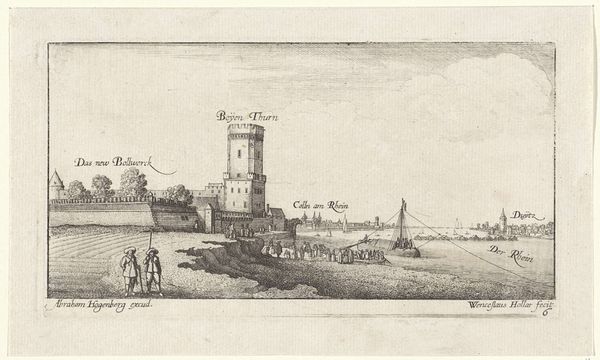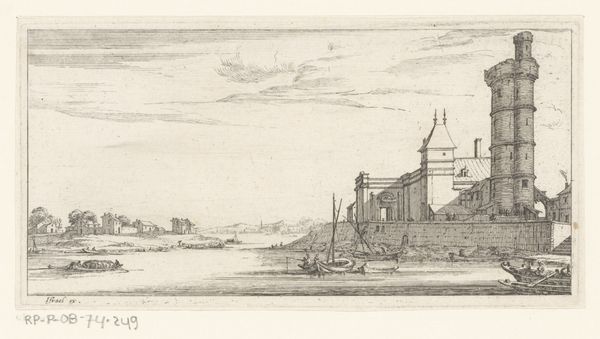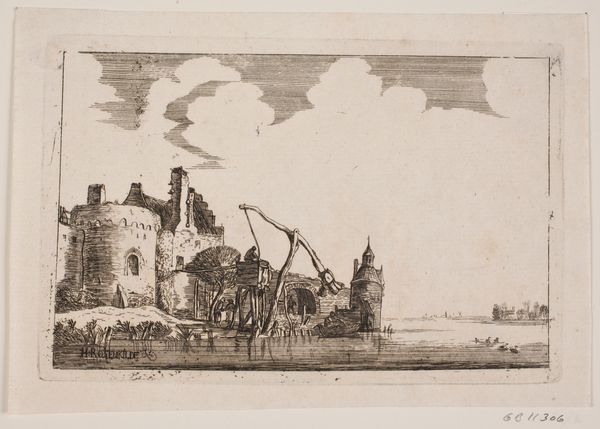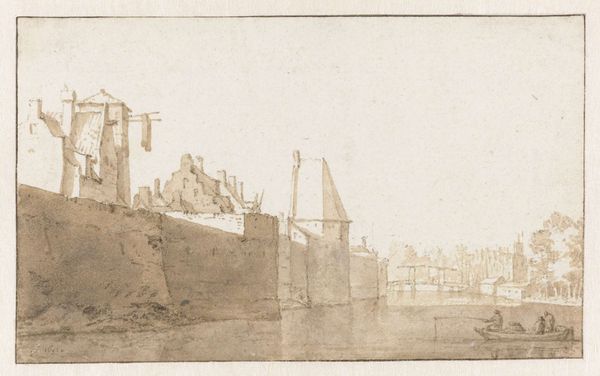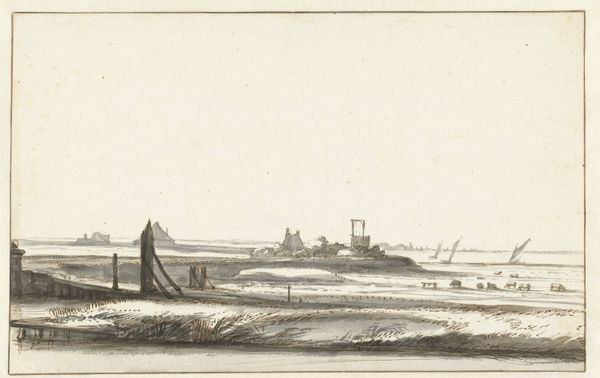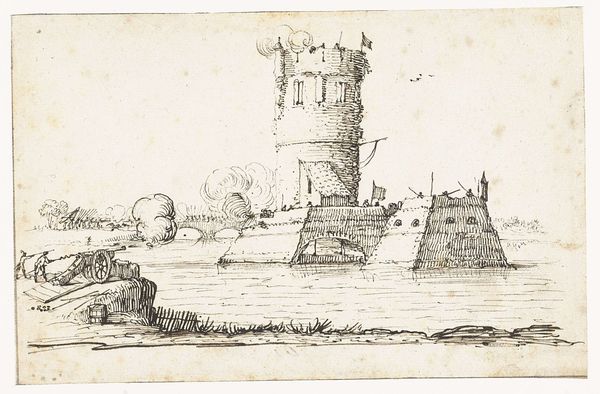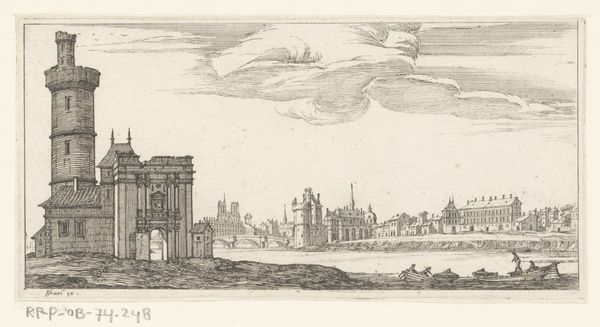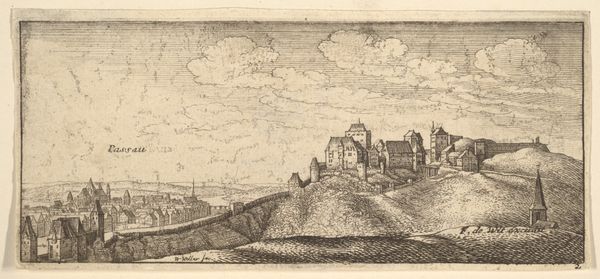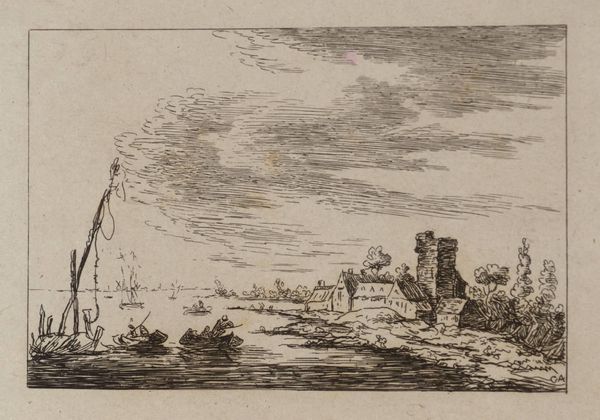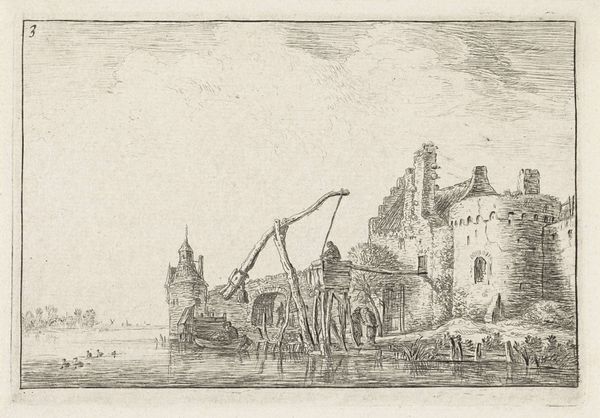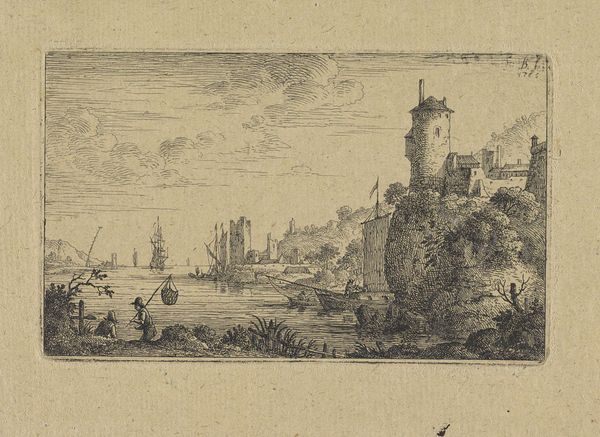
drawing, print, engraving
#
drawing
#
boat
#
baroque
# print
#
landscape
#
river
#
cityscape
#
engraving
#
building
Dimensions: Sheet: 1 13/16 × 4 13/16 in. (4.6 × 12.2 cm) cut on the platemark
Copyright: Public Domain
Curator: Here we have “Regensburg,” a cityscape etching by Wenceslaus Hollar, created between 1652 and 1677. Editor: It’s a surprisingly calm, almost melancholy scene. A quiet observation of a river city, etched in these intricate lines… It almost whispers to you. Curator: Exactly. Hollar was a master of topographical prints. Regensburg was an important Imperial City, and prints like these circulated widely, shaping how people imagined and understood these places. It’s fascinating how he uses line and perspective to capture both the architectural grandeur and the everyday bustle. Editor: There's a stillness, though. A focus on the buildings as static entities rather than what goes on inside. And the size – small and delicate – makes me consider who owned them. Was it meant for personal contemplation, or some wealthy collector's cabinet? Curator: Prints like these definitely spoke to multiple audiences. Think merchants wanting a souvenir, or scholars collecting images of important landmarks. They were surprisingly accessible, a way to own a little piece of a distant city. What strikes me is how he balances documentary precision with a very personal, artistic vision. Editor: And maybe that is what imbues that subtle, emotional mood into it. Hollar isn't just mapping space; he’s mapping a feeling. Look at how he renders the light on the water, that almost imperceptible shimmering. It feels like a fleeting moment. This intersection of history and quiet human perception fascinates me, this man traveled here and saw… this! Curator: It brings up interesting questions about the power of the image in shaping our understanding of history and place. This one little engraving had a massive effect. Editor: It reminds us that even the most seemingly objective renderings are always filtered through the lens of the artist's eye – or perhaps, even more precisely, their soul. It truly adds dimensions of depth to what it means to consider "art history". Curator: Definitely, and looking at it now, I find myself wondering what the stories were behind each little house in the town that went completely unrecorded. Thank you for that new point of perspective! Editor: And thank you! Now, I want to journey down that river!
Comments
No comments
Be the first to comment and join the conversation on the ultimate creative platform.
